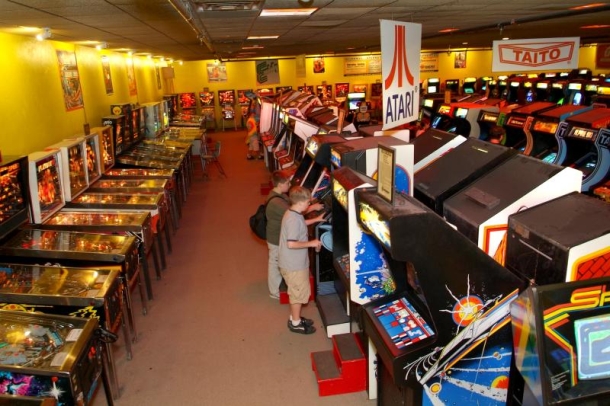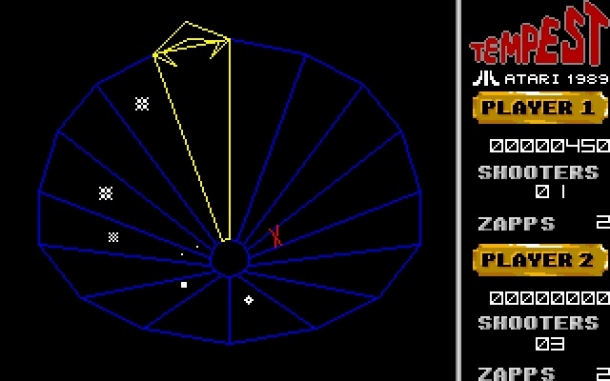"Yeah right," I say, incredulous. My voice carries no real cynicism, though. The woman has me wrapped around her finger. I'm clearly gone.
But I continue the tease. "I'll bet you were one of those 16-year-old girls in the tight jeans who stood behind their boyfriends in the arcade. You always the made fat kids with glasses -- like me -- uncomfortable."
Jessica gives a fourth-date 1986 hair-flip-with-a-giggle. "Nope, I'm serious. I was the Tempest Queen. It was my machine."
Two weeks pass.
I invite her over for dinner. I greet her at the door with a goofy grin. "Come on. You've got some work to do," I say. Taking her by the hand, I walk her down the industrial black metal steps into the loft, a pre-yuppy concrete open-space suitable for college kids and divorced men.
Her eyes light up when she sees the black obelisk. "Does it work?" she asks. She runs her hands over the sharp angles of the cabinet. The marquee is faded. The laminate sites and T-Molding have fallen off in places, revealing moisture-swollen pressboard.
I go behind the cabinet and plug in the barely restored Tempest. The screen comes to life. Jessica stands mesmerized, and gives the spinner a series of slow, near-sexual twists. I hand her a quarter.
Inexplicably, it's three months until I propose.

As geek-overlord Wil Wheaton has written about repeatedly (and speechified at two different Penny Arcade Expo keynotes), a real arcade is -- was -- a special place. And while attempts to recapture the mid-'80s feel of a real arcade exist in magical spots around the country, like New Hampshire's Funspot, or the retro room at Penny Arcade Expo East, they suffer not just from a lack of hygiene and me-not-being-13, they're also very far away.
Catering to my sad demographic, the purveyors of console games have milked this retro-lust through hundreds of retreads, repackagings, and nostalgia-turds. It's extraordinarily rare that any are worthy of their source material. In the case of Tempest, I've owned no fewer than six crappy versions and ports, on top of the original cabinet: Atari ST, Microsoft Arcade, PlayStation 2, Nintendo DS, and twice on Xbox Live Arcade.

Atari ST Tempest image courtesy Typhoon 2001, a freeware Tempest clone.
The Third Posture
I recall a very clear moment when I stepped over the line from nostalgic old-dude into obsessive, get-off-my-lawn retro nutcase.
The scene: PAX East, March 2010. A dozen or so stand up arcade machines and four pinball cabinets have been assembled by the American Classic Arcade Museum, the non-profit arm of the aforementioned Funspot. In meatspace, it's just a darkened conference room. In a few days, the space will likely be filled with 17 pharmaceutical reps ignoring a presentation on how to sell cholesterol medication. But today, it's a portal to a dark arcade in 1984. Every person in the room is over 30, and simultaneously 12 years old. We are all polite to a fault, taking our one turn at Omega Race or Sinistar and moving on.
It's here that I come to a few realizations that latch on and don't let go:
1) We all know the two game postures: The lean-forward of playing Civilization or World of Warcraft at the PC, and the reclined tension of Halo on the couch. But we've forgotten the third -- the foot-shuffling high-attention that comes from standing in front of a cabinet, playing a game that can't possibly last more than 15 minutes on a quarter.
2) Arcade games don't translate because of control substitution. The highly engineered fight sticks and driving wheels on our consoles fail to capture the experience of using Stargate's two-way joysticks, the feel of a Tempest spinner, or the precision of a Missile Command trackball.
I had only one option: Build an arcade.


